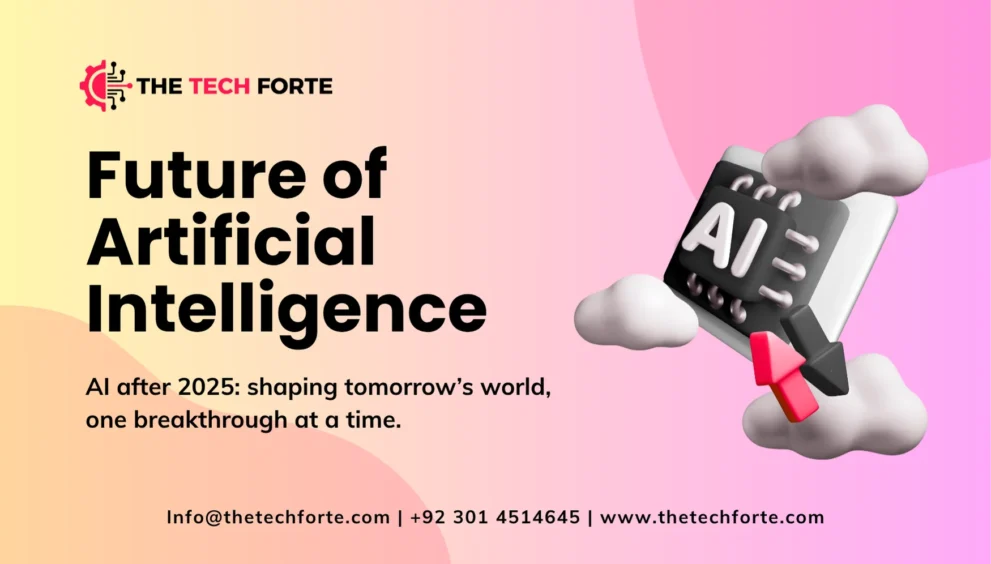The Future of Artificial Intelligence: What’s Next Beyond 2025?

Not long ago, AI was a curiosity. Chatbots gave clumsy answers. Self-driving cars looked like science fiction. But in 2025, it’s everywhere—inside hospitals, cars, offices, and even your phone’s predictive keyboard. The question has shifted. It’s no longer “will AI change things?” It’s “how deep will the changes go?” When you see ChatGPT and the future of artificial intelligence headlines, you’re really looking at the biggest cultural shift in human–machine interaction since the birth of the web. This “deep language revolution” isn’t just about writing faster emails—it’s about machines grasping nuance, humor, and even tone. That’s not futuristic—it’s happening now.
Healthcare’s Turning Point
Walk into a hospital radiology wing today. A radiologist may read hundreds of scans in a week. Fatigue, pressure, and human error creep in. Now add an AI that reviews the same scans in seconds and highlights anomalies invisible to human eyes. The future of AI in radiology isn’t about replacing experts—it’s about giving them sharper tools. Mayo Clinic researchers are already piloting AI for early cancer detection. Patients might never know a machine flagged their case, but it could mean a life-saving intervention months earlier. That’s the kind of future that doesn’t make headlines but quietly saves lives.
Roads That Think
The future of AI in the automotive industry is bigger than “self-driving cars.” Sure, Tesla and Waymo get attention, but the deeper shift is about vehicles that talk. Cars that warn each other before a collision. Trucks that reroute on the fly to save fuel. Cities where traffic lights adjust in real time because AI sees jams forming before humans do.
This is the future of AI in transportation: not just movement, but coordination. By 2030, the idea of cars acting in isolation may feel as outdated as using a paper map.
Social Media’s Mirror
If healthcare shows AI’s promise, social media shows its complexity. Open TikTok, Instagram, or YouTube—every video you see has been selected by an algorithm that already knows more about your preferences than your best friend.
Now imagine the future of AI in social media: newsfeeds tuned so precisely they feel custom-made. Virtual influencers are more engaging than real ones. Or worse, AI-generated misinformation so slick it passes for reality. Platforms are racing to harness this power while governments scramble to regulate it. The balance between personalization and manipulation will define whether AI enriches online life or corrodes it.
The Future of Work: Friend or Foe?
Here’s the hard truth: AI doesn’t just make tasks easier—it changes the nature of jobs themselves. A Stanford study on the future of work with AI agents shows workers managing intelligent assistants the way managers oversee teams. Imagine accountants using AI to comb through tax codes, or marketers working with AI to generate campaign drafts.
But here’s the rub: if machines take on chunks of our workload, what happens to those whose roles shrink? The future of work—robots, AI, and automation— could free people to focus on creativity and empathy… or it could leave entire sectors scrambling. The latest AI news: business future of work, May 2025, already hints at this divide. Some companies are thriving with AI integration. Others are quietly cutting staff.
When Governments Step In
The technology is moving fast—maybe too fast. Enter regulation. In the U.S., lawmakers floated the Future of AI Innovation Act, a bid to set ground rules without smothering progress. Europe’s already stricter. China? Moving in its own direction.
Here’s the tricky part: regulating AI isn’t like regulating electricity or cars. Algorithms are black boxes. Bias can creep in without warning. Transparency is murky. And let’s be honest—most citizens don’t fully understand how AI works, so trust is fragile. Without that trust, no law will matter.
The Shadow Side
For all the optimism, AI’s risks can’t be brushed aside.
- Deepfakes are already blurring the truth. In the wrong hands, they could sway elections.
- Cybersecurity is entering a new era of AI-driven attacks that learn and adapt.
- Environmental impact is real—training a giant model can consume more energy than 100 homes in a year.
- Inequality could worsen as wealthy firms dominate the AI race while smaller players struggle to compete.
These aren’t hypotheticals—they’re unfolding now. And if unchecked, they could shape the darker side of the AI story.
Preparing Ourselves
So what do we do? Three groups hold the keys:
- Businesses: pilot AI, test carefully, and don’t treat automation as a shortcut to layoffs.
- Governments: invest in education, fund reskilling, and create guardrails.
- Workers: double down on skills machines still can’t master—creativity, empathy, strategic thinking.
The winners won’t be those who resist AI. There’ll be those who learn to partner with it.
Beyond 2025: A Glimpse of 2030
If the last five years taught us anything, it’s that predictions can feel conservative. Still, here’s what many experts whisper about 2030:
- Artificial General Intelligence is inching closer—machines that reason across multiple fields.
- Quantum-powered AI is breaking barriers in medicine, materials, and climate modeling.
- AI governance that doesn’t just serve corporations but steps into solving global crises.
Ambitious? Absolutely. Unrealistic? Not anymore. Ten years ago, the idea of AI writing a novel or passing the bar exam was laughable. Today, it’s Tuesday news.
Final Thoughts
The story of AI is not about machines. It’s about us. Will radiology AI save more lives than it complicates? Will cars that think make roads safer—or create new vulnerabilities? Will AI in social media connect us, or polarize us further?
The answers won’t come from the code. They’ll come from the choices we make, the regulations we craft, and the values we hold.
AI is no longer the future—it’s the present. But the shape of what comes after 2025 is still up for grabs. And maybe that’s the most important truth of all: the future of AI isn’t about the technology itself. It’s about the humans guiding it.




























































































































